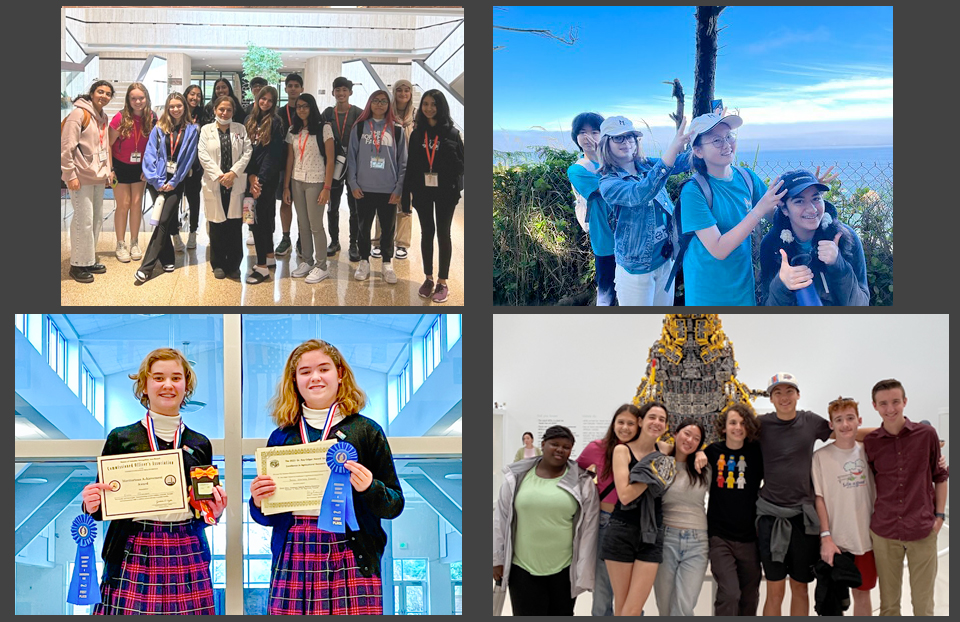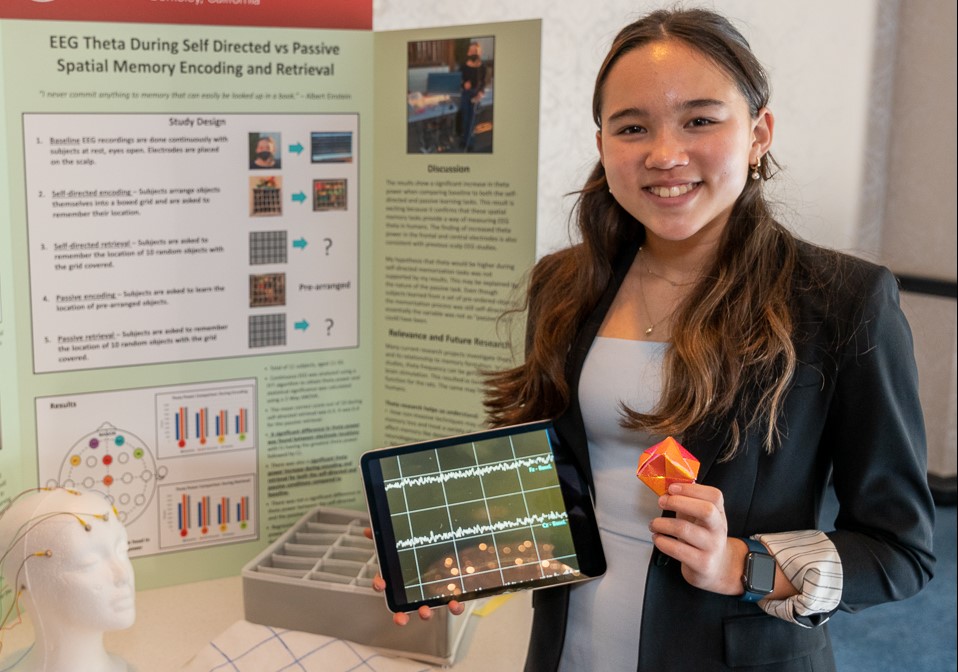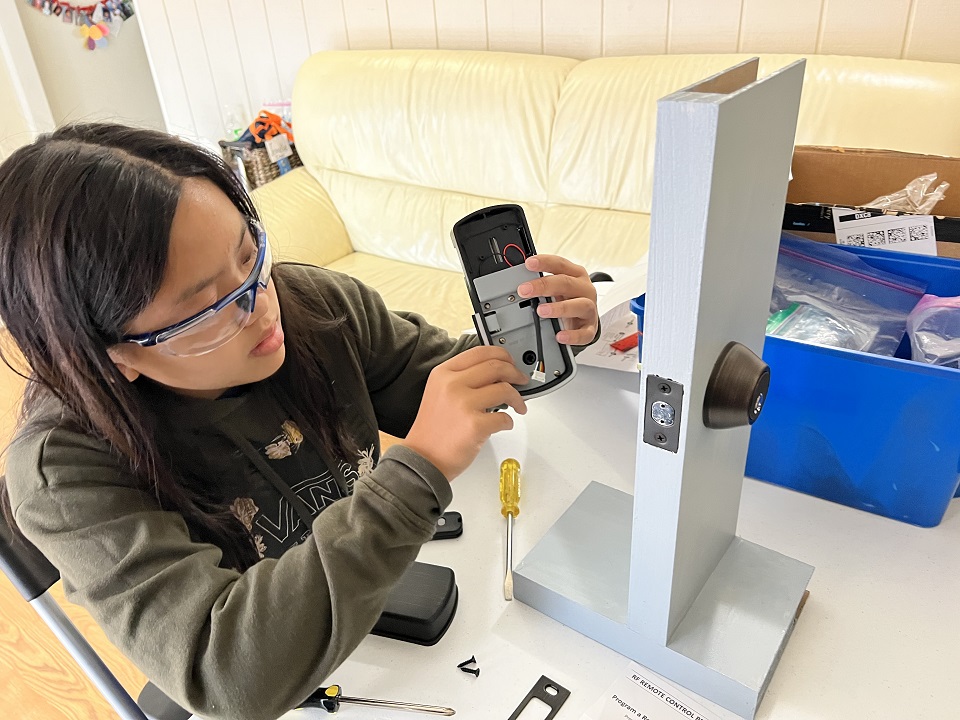Valerie Ding Reports on Trip to CERN as an Intel ISEF Award Winner
Valerie Ding of Portland, Oregon was one of 12 students to win a trip to the European Organization for Nuclear Research (CERN) at the Intel International Science and Engineering Fair (Intel ISEF) 2012. In addition, she won a Fourth Place grand award in Physics and Astronomy. Valerie was also a finalist in last year’s Broadcom MASTERS 2011, a program of Society for Science & the Public, and the national science, engineering, and math competition for 6th- 8th grade students. Below she describes her experience at Intel ISEF and during the trip to CERN.
What was your experience being an International Science and Engineering Fair finalist like?
The Intel ISEF was mind-bogglingly fun, satisfyingly challenging, and absolutely wonderful all around. I was amazed by the versatility and diversity of the other finalists’ projects and deeply enjoyed interacting and conversing with fellow enthusiastic, science-minded students about everything from the simple beauty of mathematics to the unpredictable world of quantum mechanics.
Can you provide a short description of your research project and how you initially became interested in this topic/science in general?
At a young age, I was constantly contemplating “eco-friendly” and “green” technology – first I was curious about renewable energies such as fuel cells and solar panels, but I soon discovered that energy conservation was more readily achievable in the short-term and began thinking about LEDs, which are now rapidly gaining traction in the market. Later, out of curiosity, I attended a quantum computing seminar at Portland State University that launched me into the vast and exciting world of quantum physics. I was immediately hooked.
Combining this newfound passion for quantum physics with my lifelong quest for energy-conserving technologies, I used concepts and techniques from quantum physics to develop a novel research methodology and energy efficiency algorithm for investigating white LEDs. This involved large amounts of research into the depths of quantum physics and materials science, but I perused papers in scientific journals and a wide variety of books and resources to accomplish my goal.
How did you feel when you found out you won the trip?
It was my first Intel ISEF and, considering the plethora of wonderful, innovative projects I had seen over the week, I was honored to be a finalist, let alone an awardee. When I heard my name called for the CERN Award, overjoyed shock morphed into utter happiness and breathlessness, my legs turned to jelly (the good kind), and I practically tripped onto the stage. I remember texting my dad that evening, “CERN trip!” with more than twenty exclamation points. Being relatively coolheaded, using more than three exclamation points to conclude any one sentence is an extreme rarity for me – and more than ten is once-in-a-lifetime. That’s how special it felt.
Can you tell us about your experience visiting CERN?
Our trip to CERN was the perfect intersection between a Swiss and French cultural experience and indulgence in scientific disciplines ranging from computing to particle physics. We balanced tours of the experiments’ control centers and the CERN Control Center with engaging lectures by scientists and researchers at CERN and associated institutions. I was amazed by the cohesive community and true passion that the researchers showed for their work – never before had I seen such a large-scale scientific collaboration. Living and laughing with the other trip-goers while delving into the depths of science and applications made for an unforgettable, life-changing week that couldn’t have been better.
What was the most memorable part of your trip?
There are so many experiences that define our trip to CERN, but I was most struck by the sight of a group of devoted researchers hard at work in the Control Center. This camaraderie inspired me to rethink the true spirit of science research and will definitely stick with me. Listening to the scientists and lectures helped me realize the importance of reassessing and moving on after failures – and celebrating victories. CERN’s July 4th announcement of a “Higgs-like” particle, something that could redefine particle physics, exemplifies these values of dedication and determination.
How do you think participating in the Intel ISEF and traveling to CERN will impact your future plans and/or research?
Not only has the Intel ISEF encouraged me to pursue a scientific train of thought and develop it to its highest potential, it has also instilled in me a more complete sense of the process behind research and a determination to investigate problems to the end. CERN has inspired and changed me for the better. I approach science research with an emboldened and even more determined attitude and eagerly absorb all disciplines of science in the quest to find my true scientific calling. I’m seriously considering pursuing science or engineering at the university level, and Intel ISEF and CERN have helped me realize a passion in quantum physics.
Do you have any advice for other young students interested in science?
Follow your heart – find a field of science that you feel strongly about and read about it. Look at applications of the discipline in the real world and talk to a teacher about it. While conducting research, don’t be afraid to make mistakes. Learn from them, record their causes and solutions in your lab notebook, and move on with the goal in mind. Finally, have fun! Personally, I can’t produce my best work without enjoying the process.
Final thoughts?
I truly appreciate the opportunity to participate in the Intel ISEF as a finalist and I’m extremely grateful for the chance to visit CERN– both experiences have changed my life and pushed me to pursue science research with all my heart.
Winners of the CERN Trip:
Winners of the 2012 CERN trip included Akash Krishnan from Portland, Oregon for “Improving 3D Virtualization and Object Recognition in Real-Time Using Kinect Sensors;” Nicholas Schiefer from Ontario, Canada for “Apodora: Markov Chain-Inspired Microsearch;” Linn Bieske from Thuringia, Germany for “ RF Properties of Structured Thin Film Layers on Glass: Realization of Innovative Antennas;” Christopher Nielsen from Alberta, Canada for “Real-Time Optical Ego-Motion Estimation through Robust Planar Tracking;” Mingu Kim from Columbia, Missouri for “A Novel Variant of the Newton-Raphson Method, A Quadratic Convergence Criterion, and Computer Graphics;” Viola Mocz from Mililani, Hawaii for “New Ideas in Physics: The Mass Ratio of Elementary Particles from Torus Geometry;” Henry Lin from Shreveport, Louisiana for “A Generalized Holographic Model of Cosmic Accelerated Expansion;” Anirudh Dasarathy from Gates Mills, Ohio for “PT-Symmetric Boundary Conditions in Quantum Mechanics;” Benjamin Bartlett from Lexington, South Carolina for “Unidirectionalization of Particulate Distributions in Isotropic D+D -> He3+n Reactions Utilizing Differential Ion Velocities;” Saumil Bandyopadhyay from Richmond, Virginia for “A Novel Universal Photon and Radioactive Beta Particle Detector: Multifunctionality Enabled by Wavefunction Engineering, Photomodulated Electron Tunneling, and Quantum Confinement of Charge Carrier Motion in Nanowires;” Connor Tom from Riverside, California for “Using the Temperature Dependence of the Speed of Sound to Detect Volatile Organic Compounds in Air;” and Valerie Ding from Portland, Oregon for “Shining Like the Sun: A Novel Quantum Mechanical Approach to Property Analysis and Energy Efficiency Algorithm for White-Light LEDs.”


